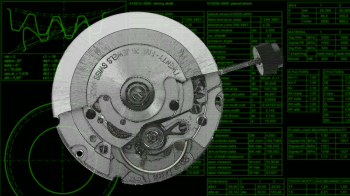Building up a solid and reliable body of knowledge is not easy; if it were easy everyone would do it. Acquiring information is straightforward enough. You read the right books, follow the right websites (ahem), and you’ll have all the data you could ever want. Organising that data into coherent systems of thought, from which you can explain, extrapolate and extemporise, requires a little more. So how do you get from having a big pile of formless data to possessing higher-level comprehension and knowledge? You ask questions.
Case in point: in-house movements are generally assumed to be of higher quality and can therefore command a higher price than externally supplied movements. The question we should all be asking is — is that always true?
Here’s the logic that lies behind this assumption. Watch companies, as businesses with bottom lines to meet and employees to pay, make decisions based on profit. Even companies that publicly eschew short-term, low-cost solutions, who profess to focus purely on product quality and customer experience, are ultimately looking at long-term, sustainable profit via a strategy of growing their reputation and prestige. Businesses that actively pursue loss-making ventures are not businesses; they are hobbies, or a means to impress your rich friends.
Now, based on this rationale, any watch brand that has an in-house movement as part of its offering has done so for one of two reasons. Either it can produce these in-house movements at a lower cost than an external movement specialist (implying that it possesses more efficient manufacturing processes than a high-volume industrial facility), or these in-house movements are so fabulously fine that the brand can justify the cost. Since the first option is improbable, we naturally assume the second one is true. Ergo, we hear “in-house movement” and we think “amazing quality, take my money!” Pretty solid hypothesis, on the whole. Hold that thought, though, because we’re going to see what happens when you apply real life to hypothetical reasoning.
I don’t know when and why in-house movements started becoming such a big freaking deal. Oh wait, I do. In-house movements have always been an indicator of professional dedication and commitment to quality, rooted in the romantic idea of a solitary watchmaker in his alpine atelier, creating everything from scratch. In the first years of the new millennium, however, a business decision taken by an industrial movement producer led to sleepless nights for a considerable number of watch brands, compelling them to haul ass on a massive scale and start developing their own in-house movements.
In some cases, the in-house movements that resulted from this industrial exigency were not necessarily better than their externally sourced predecessors. Under these circumstances, the association between “high quality” and “in house” became extremely strained. It wasn’t ideal, but people did what they had to do to remain commercially viable. Most of these initially problematic in-house movements are in fact quite nice now that some time has passed and they’ve been refined, tweaked, optimised.
What does it mean to be an in-house movement anyway? I’ll be honest — my own criteria for this appellation is on the strict side. People say I’m too picky (the actual word they use is unprintable), but who wants to read a watch writer with lax standards for this kind of thing?
In my view, an in-house movement is conceived and constructed by expertise that is wholly owned by a brand. The basic purpose and mechanical premise of the movement originates from the brand. The technical specifications, production schematics and design/production digital files are created by the brand. External consultants and external parts producers are permissible, but the actual work is done by the brand.
An externally sourced, internally assembled and finished movement ebauche, no matter how exemplary and sophisticated, is not an in-house movement. That doesn’t mean it’s inferior. For years, Patek Philippe used a highly modified, internalised version of the Lemania CH 27 in their chronograph watches, and it was a magnificent movement. But it wasn’t an in-house movement. And you know what; no one cares. Some of Patek Philippe’s best-performing chronographs at auction were based on this movement.
An in-house complication module fitted on an externally sourced base is not an in-house movement, and it is a disservice to the development team to call it an in-house movement. If I didn’t write an article, I wouldn’t want my name printed above it, and I believe watchmakers possess the same level of professional spirit and pride.
A proprietary movement developed and produced by an external movement specialist for the exclusive use of a brand is excellent in its own way, but it is not an in-house movement.
We need to stop indiscriminately applying the term “in-house” to things that are not, in fact, in-house. Definitions are important, because it is essential that watch buyers and consumers know what we are referring to when we use certain terms. Here’s a little secret for those who haven’t yet realised — consumers do not care if something is “in-house” or not. They care if it is good quality; they care if it works well. If I eat at a famous steakhouse, I don’t care if they raise their own cows; I want the meal I paid for to be well made and for it to taste good. If it is neither of those things, being “in-house” doesn’t change the fact that I should have picked a different restaurant in the first place. Any questions?
Next week: Minute repeater materials.





